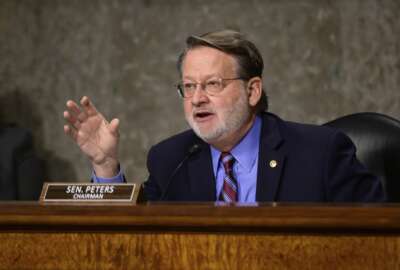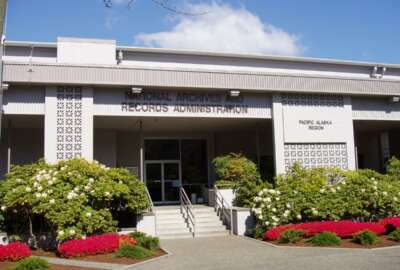GSA begins selling 11 high-value federal properties board deems underutilized
The General Services Administration, under the authority to fast-track the process, is selling federal properties considered valuable but underutilized by their...
The General Services Administration, under the authority to fast-track the process, is selling federal properties considered valuable but underutilized by their agency tenants.
GSA has closed sales on several high-value federal properties at the recommendation of the Public Buildings Reform Board, an independent agency created under the 2016 Federal Assets Sale and Transfer Act (FASTA), and expects to complete more sales early next year.
GSA awarded three sales so far: One for excess land that belonged to the Labor Department’s Job Corps Center in Edison, New Jersey, and another for the Education Department’s WestEd Office Building outside Los Angeles.
It also sold a parking lot in Idaho Falls, Idaho, belonging to the Energy Department. The agency expects to complete the sale of DOE’s nearby Information Operation Research Center in the coming months.
Flavio Peres, the assistant commissioner for real property utilization and disposal at GSA, said the agency saw “robust bidding” on these sites, and sees lots of interest from prospective buyers over the sale of the Nike Missile Site, a 14-acre former Army installation that served as a last line of defense for the nation’s capital against Soviet bomber planes during the Cold War.
“These properties are rolling over on a daily basis. When we think we’ve reached our max and when we’re about to close on these properties, another day is added. So we’re in a good spot,” Peres said.
Next year, Peres said GSA expects to close sales on excess land at another Job Corps center in Sacramento, California, the Ronald Regan Federal Building in Harrisburg, Pennsylvania and the Auburn Complex in Auburn, Washington, which houses a GSA regional headquarters, a Social Security Administration building, a childcare center and warehouses.
Pandemic ‘brought a lot of activity to a halt’
The Public Buildings Reform Board last year outlined a dozen high-value, excess properties it recommended putting up for expedited sale or disposal by GSA. The board expects GSA will bring in about $500 million in revenue from these property sales.
Former Public Buildings Service Commissioner David Winstead, a member of the board, said the board will monitor the sale of the high-value assets to make sure GSA gets the maximum value for these properties.
The board’s actions dovetail with a renewed push by GSA to consolidate federal real estate as more telework-savvy agencies reassess their office space needs in the aftermath of the COVID-19 pandemic.
However, agencies don’t yet have a complete understanding of their post-pandemic office needs, and are reluctant to give up their current space until they do.
“COVID really brought a lot of activity to a halt, because agencies stopped their strategic planning,” Mary Phillips, a former staff director for a subcommittee of the House Transportation and Infrastructure Committee. “The whole world changed with COVID and that really prevented us from getting as many recommendations as we think otherwise would have.”
Winstead, however, said the real estate market is recovering from the impact of the pandemic.
“The market’s back, to large extent. Tenancy is not, but the market’s back,” he said.
Board flags 15 properties for upcoming round
FASTA authorizes the board to complete two other rounds of recommendations. The latest round drafted by the board includes 15 properties, most of them vacant land or underutilized buildings.
GSA owns most of the properties on the list, but the list also includes properties owned by NASA and the Agriculture and Labor Departments.
The next round’s preliminary list includes:
- Agricultural Research Service – Glenn Dale, Maryland
- FDA White Oak (excess land) – Silver Spring, Maryland
- Fort Worth Federal Center – Fort Worth, Texas
- Gary Job Corps (excess land) – San Marcos, Texas
- Goddard Space Flight Center (excess land) – Greenbelt, Maryland
- Gus J. Solomon Courthouse – Portland, Oregon
- Will Robinson Federal Building – Provo, Utah
- Jeffersonville National Processing Center – Jeffersonville, Indiana
- Mount Vernon Federal Building – Mount Vernon, Illinois
- OKC Property Management Depot – Oklahoma City, Oklahoma
- Racine SSA District Office – Racine, Wisconsin
- Richard B. Anderson Federal Building – Port Angeles, Washington
- Rosa Parks Federal Building – Detroit, Michigan
- San Antonio Federal Building West – San Antonio, Texas
- William L. Beatty Federal Building & Courthouse – Alton, Illinois
PBRB expects to submit this list to the Office of Management and Budget by Dec. 27.
Former Rep. Nick Rahall, one of the board’s members, said the board is excited about its latest picks, “even though it may be rather modest compared to future rounds.
Proceeds from federal building sales under FASTA go into an “asset proceeds fund” that supports the board and GSA’s work getting the next round of properties ready to sell.
Congress appropriated $46 million to the board, some of which the board has spent to prepare the high-value asset properties for sale.
But Phillips said Congress has yet to appropriate funds for the next round of properties, and some of the biggest potential sales from the high-value list have not yet been put on the market.
“While this round is more modest because of our limited funding available, we are very encouraged about round two, and we have already identified a number of properties and teed them up for consideration, so we can start moving on those very quickly,” Phillips said.
Many federal buildings reviewed by the board are historic, have environmental contamination issues, or title and deed issues.
Phillips said the board prefers resolving these types of issues before it recommends selling properties, “because it will lower the risk that there will be problems going forward.”
“As projects are ready for sale, they often need investment. Employees have to be relocated, and so you need some funds in order to make future sales and consolidations possible,” she said.
Board prioritizes community engagement following lawsuit
The board is also taking steps to engage communities in the sale of these properties.
OMB pulled its approval in April to sell one property on the high-value list for the Federal Archives and Records Center in Seattle, Washington. Acting OMB Director Shalanda Young said the decision to sell the site ran “contrary to this administration’s tribal-consultation policy.”
A federal lawsuit led by Washington State’s attorney general challenged the board’s work selecting the property, saying it failed to engage the community and local tribes in the process.
The facility holds permanent agency records, including tribal and treaty records from the Bureau of Indian Affairs, more than 50,000 original files related to the 1882 Chinese Exclusion Act and original records related to the internment of Japanese-Americans in World War II.
If sold, NARA planned to ship its records to other agency facilities in Southern California and Missouri.
“We had some pretty public issues with NARA in Seattle, and we learned how important the outreach is as a result of that, said board member Angela Styles, a former administrator of the Office of Federal Procurement Policy. “But we also learned how much we can enhance the value of a property by having discussions with localities, having discussions with developers, having discussions with people that are already interested in the building and the city.”
Styles said the board is also considering the possibility of building swaps, based on what she has done and what GSA have been able to do in San Antonio, Texas.
“It’s incredible what the local GSA has done down there in terms of swapping buildings. They’re like, ‘Oh, we want this building here,’ the city wants it and the federal government wants another building. And so really working together with the communities to understand what its best use is. So when we talk about value, it’s not just enhancing the financial value. It’s really enhancing the value to the local communities.”
Phillips said the board also developed a property screening tool, which she said gave the board more robust analytics when selecting a shortlist of properties from the Federal Real Property Profile.
The board, using this screening tool, scored each property based on financial efficiency, implementation and the surrounding community. Based on these criteria, the board assigned a score to each property and used those scores to compile its top candidates.
The board also ran each property through a financial model to determine each property’s value and the estimated net benefit to taxpayers.
Phillips said the board took some of these steps in response to a recent report from the Government Accountability Office, which found the PBRB didn’t fully document how it narrowed its initial short-list of 44 buildings down to a dozen.
For the final round of properties, the board is looking at the Nebraska Avenue Complex in Washington, D.C. previously occupied by the Department of Homeland Security.
Other properties include the Webster School, a 19th-century school in D.C, the Montlake Lab in Seattle — first government laboratory dedicated to the study of living marine resources on the West Coast — the Taft and Hamilton federal laboratories in Cincinnati, Ohio, and the Wilshire Federal Building, which includes the FBI’s Los Angeles field office.
The board will issue its final round of recommendations to OMB by December 2024, which is expected to generate as much as $4.5 billion in revenue.
Copyright © 2024 Federal News Network. All rights reserved. This website is not intended for users located within the European Economic Area.
Jory Heckman is a reporter at Federal News Network covering U.S. Postal Service, IRS, big data and technology issues.
Follow @jheckmanWFED






